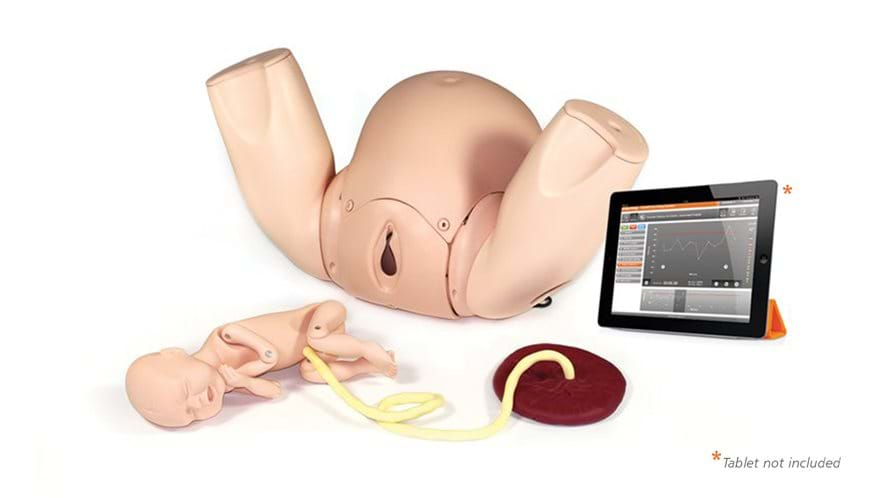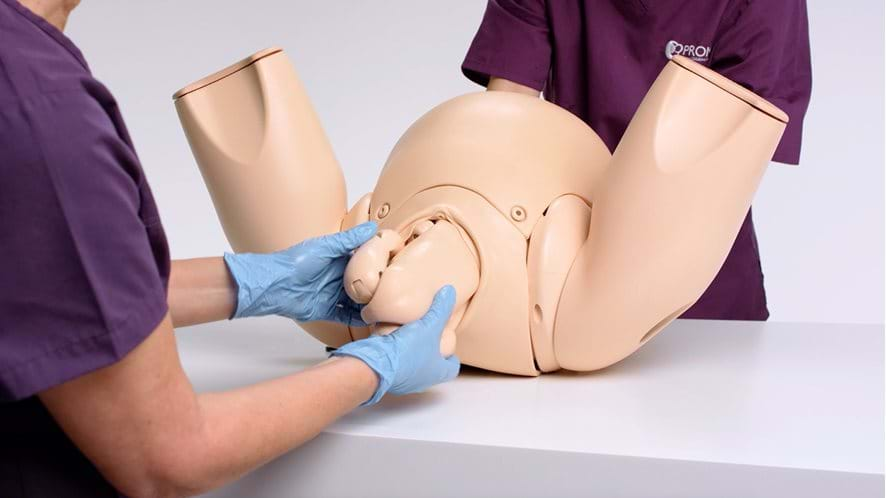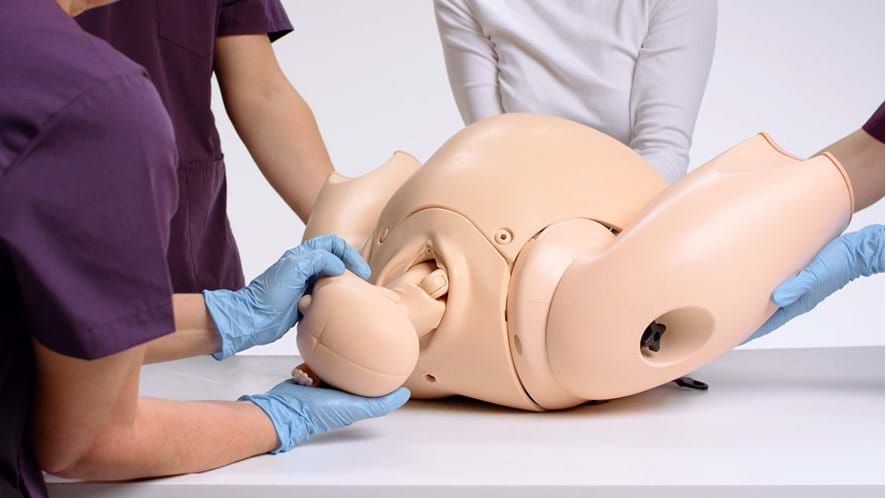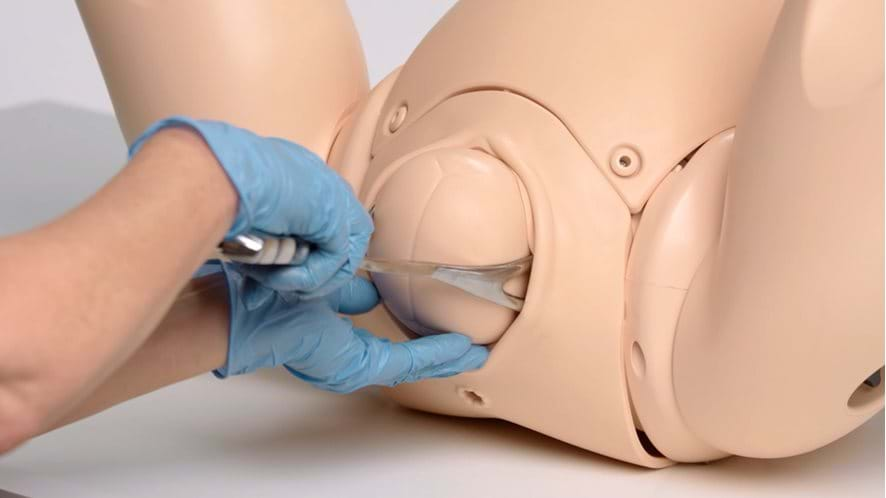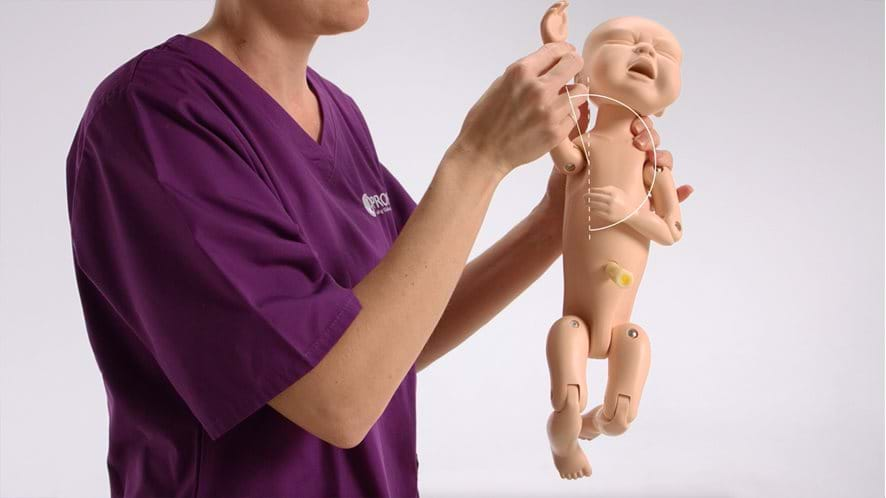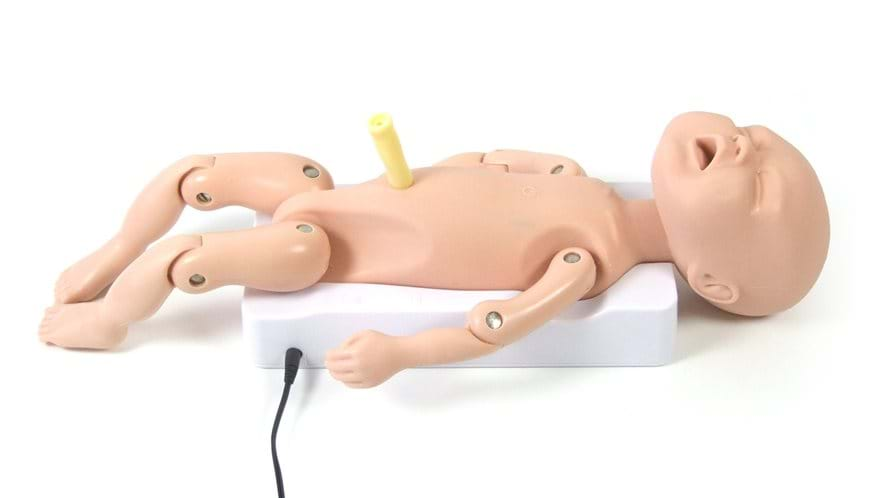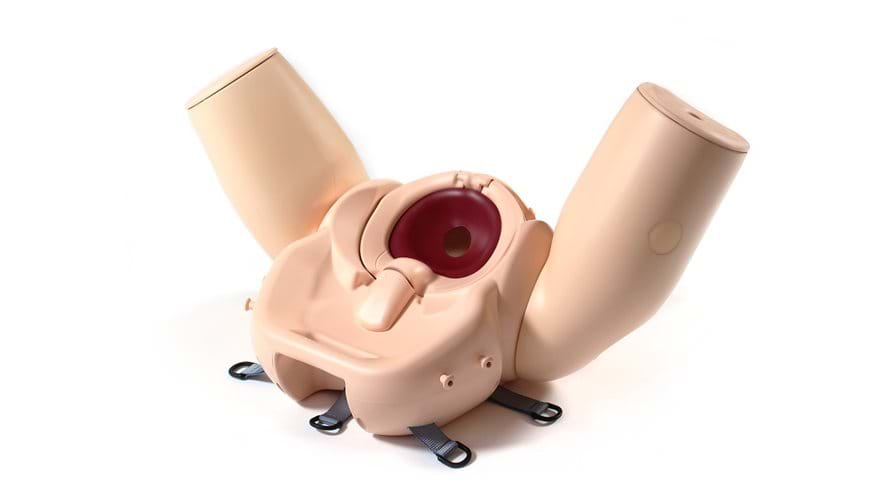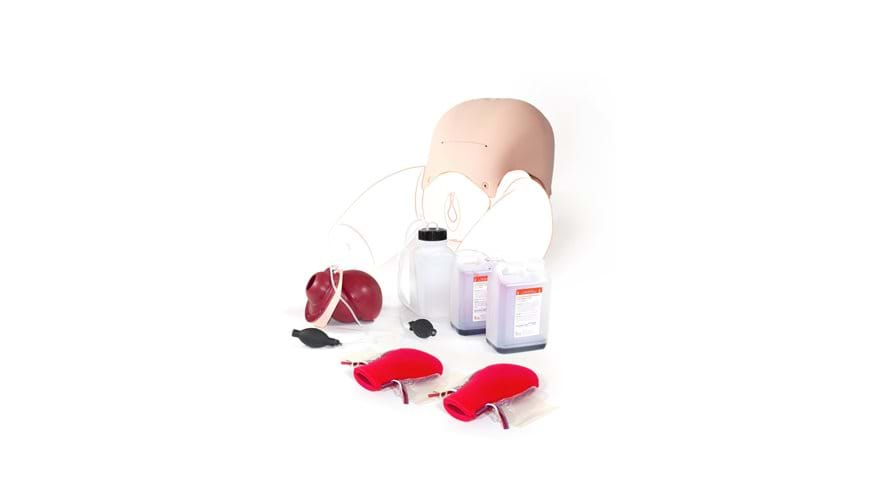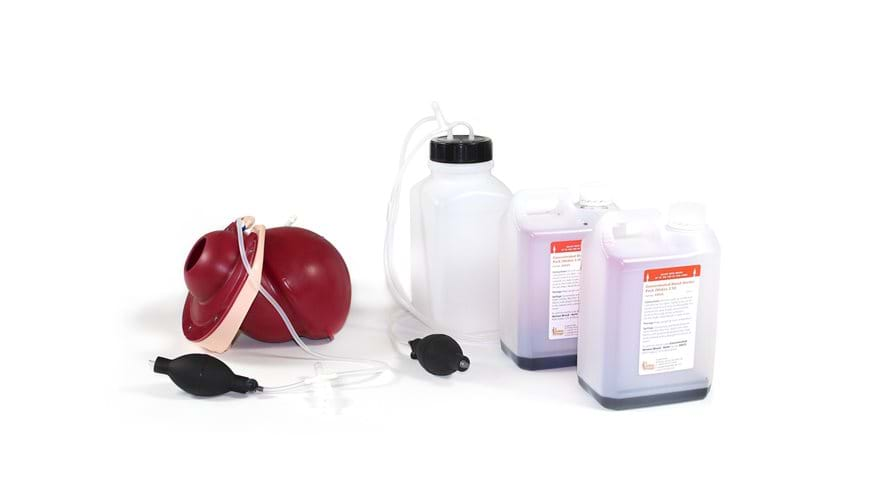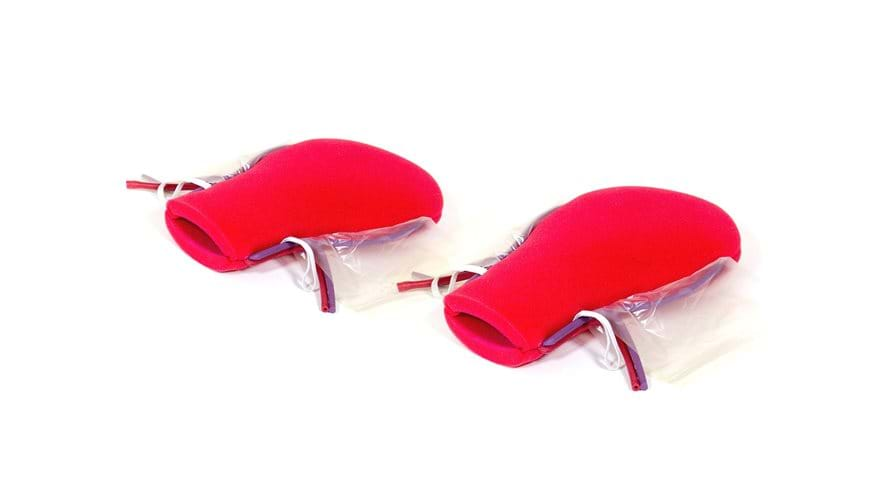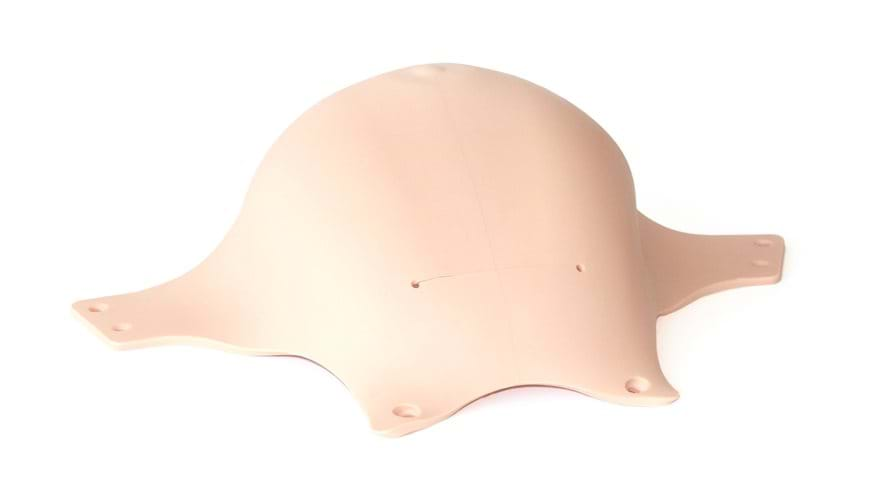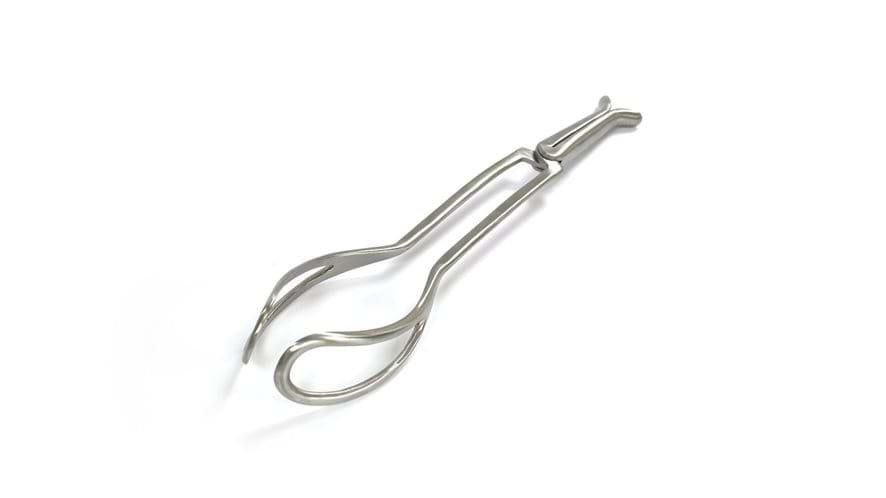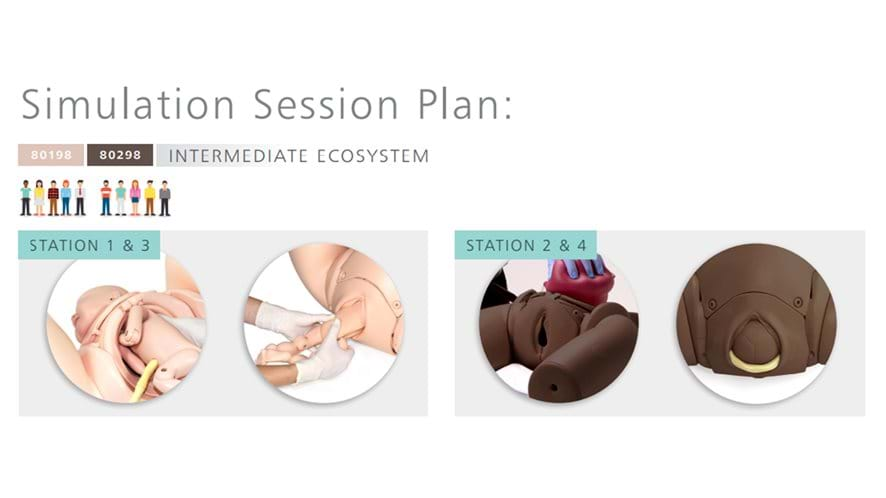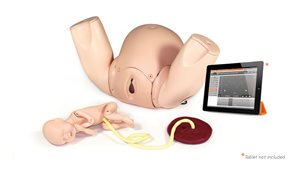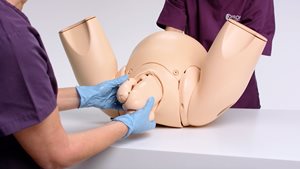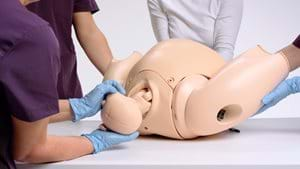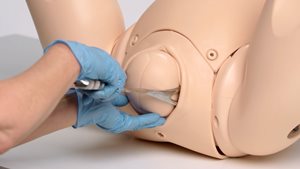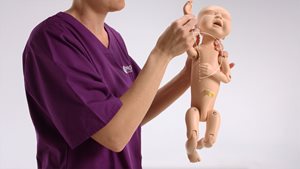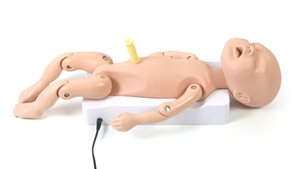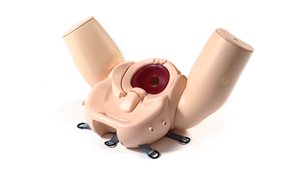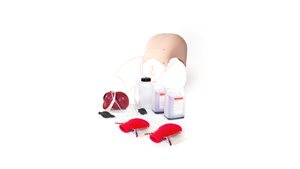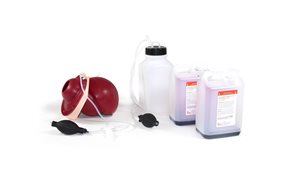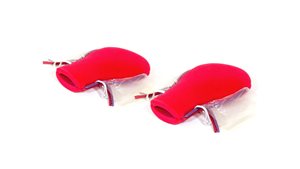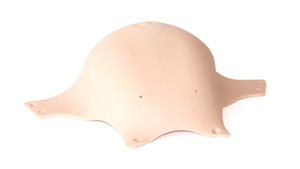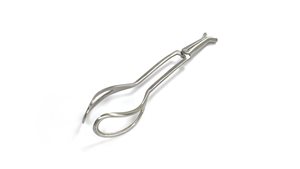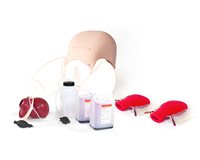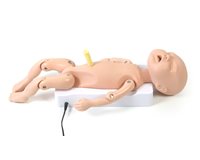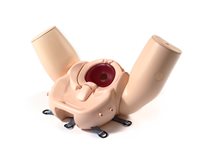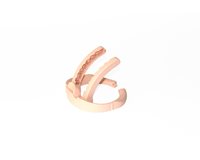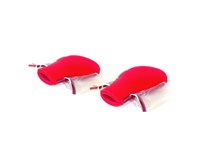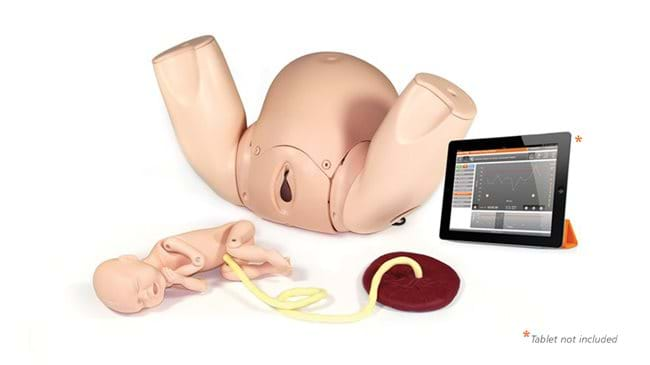Birthing Simulator - PROMPT Flex ECOSystem - Medium (Light Skin Tone)
The PROMPT Flex ECOSystem has been designed to complement the teaching of the American College of Obstetricians and Gynecologists (ACOG), Emergencies in Clinical Obstetrics (ECO) course.
The objective of the ECO course is to give learners the ability to describe evidence-based protocols for common obstetric emergencies, alongside the ability to demonstrate correct technique and perform key responsibilities during a simulated obstetric emergency. Learners will also practice teamwork and communication for simulated cases complicated by shoulder dystocia, postpartum hemorrhage, umbilical cord prolapse, and vaginal breech delivery.
The Limbs & Things ECOSystem Medium has been designed for classes of 5-10 learners, running two ECO obstetrical emergency stations simultaneously. The ECOSystem package includes:
- 1 x Advanced PROMPT Flex Birthing Simulator (with the Force Monitoring Baby and software)
- 1 x Standard PROMPT Flex Birthing Simulator
- 1 x Postpartum Hemorrhage Kit containing
- 1 x PPH module
- 1 x Compression Suture Uterus module (containing 2 x uterus models)
- 1 x pre-incised abdominal skin
- 1 x Mock blood kit*
- Piper Forceps
The Medium ECOSystem can be set up to any of the 4 practical teaching stations:
- Station 1 – Shoulder Dystocia
- Station 2 – Postpartum Hemorrhage
- Station 3 – Breech Presentation Vaginal Delivery
- Station 4 – Umbilical Cord Prolapse
The items supplied in this product allow you to run two training groups simultaneously:
- Group 1 – Stations 1 & 3
- Group 2 – Stations 2 & 4
*The blood used with this product now contains a new preservative which is approved for use by EU cosmetic regulations. This means that, once diluted, it is safe for extended skin contact. The use of gloves is still recommended when using this product, as the pigments may stain skin and/or clothes.
Overview
ECOSystem Medium is designed for classes of 5-10 learners
The ECO course has been approved for 5 CME credits for Dos and MDs, and for maintenance of Certification part IV. You can find out more information about the course by visiting the ACOG website.
Standard & Advanced PROMPT Flex:
- PROMPT Flex’s modular design allows for multiple training scenarios that you can tailor to your specific course needs
- Additional modules available include: Postpartum Hemorrhage (PPH), Enhanced C-Section, Cervical Dilatation & Effacement (CD&E), Cervical Cerclage, Lower Legs, Compression Suture Uterus
- Baby model has improved shoulder and hip joints
- Bluetooth enabled baby allows for Force Monitoring with a scenario-based software (downloadable from the website)
- Drills run with the software can be recorded for later review
- Comes with wheeled carry case for safe storage and transportation
- The PROMPT Flex Range can offer a complete training solution for birth management
PPH Kit:
- Blood loss of up to 2 liters can be simulated
- Air bulbs are used to stimulate blood flow and control atonic state of the uterus
- Provides haptic feedback to users when simulating a boggy uterus that contracts during fundal massage
- Compression Suture Uterus represents a postpartum uterus
Realism
Standard & Advanced PROMPT Flex:
- Gynaecoid shape pelvis with soft, flexible birth canal, dilatable cervix and pelvic floor musculature provides realism in normal and complicated births
- Improved baby model with bend at the thoraco-lumbar region
- Baby model represents a full term infant in weight and size, allowing for realistic handling
- Force Monitoring software allows trainees to accurately learn the safe amount of force that can be administered during delivery
PPH Kit:
- Atonic uterus can simulate contraction on fundal massage
Versatility
Birthing Mother:
- Stand alone or hybrid use, 3 straps are supplied to secure PROMPT simulator for bench top or bed mounting
- Articulated thighs help to demonstrate Gaskin and McRobert’s procedures
- Handle on the base of the mannikin for operator use during labor simulation
- Can be used with additional modules to extend training simulations
Baby:
- Enhanced Baby has a bend at the thoraco-lumbar region
- Improved articulation of the joints offers enhanced realism for difficult birthing scenarios, such as shoulder dystocia
- Software is compatible with Windows, Mac, iOS and Android, and can be run on tablets as well as PCs*
- User definable text in the software allows for intervention and birthing scenario names to be edited into the user’s native language*
*Software is for use with the Force Monitoring Baby
PPH Kit:
- Can be quickly and easily fitted into the birthing mother to allow simulation of situations where bleeding occurs directly after delivery
- The postpartum hemorrhage module works with a bakri balloon, allowing trainees to get familiar with clinical equipment (Bakri balloon not included)
- Each uterus can be used up to 20 times
Cleaning
- Clean off excess lubricant from all mother and baby surfaces
- Drain simulated blood from tubing and rinse through with water
- Wipe clean the product with a damp soft cloth, warm water and mild detergent
- NOTE: Force Monitoring Baby module contains electronics and should not be immersed in water when cleaning
- Allow the birthing trainer and other components to dry before storing
Safety
- This product is latex free
- A poorly lubricated baby or placenta may damage the birth canal or cervix when pushed through during a procedure
- We recommend lubricating the cervix, birth canal and baby before each birth
- We recommend using Limbs & Things lubricant and Simulated Blood, non-recommended fluid products may weaken or damage the trainer
- Wear gloves at all times, and remove all sharp objects. Sharp surfaces (such as fingernails and rings) can lead to silicone damage
- Force Monitoring Baby contains electronic components, do not immerse in water
- EC Declaration of Conformity, in accordance with ISO IEC 17050-1:2010
- UKCA Declaration of Conformity, in accordance with UK Government Guidance
- Declaration of Conformity, in accordance with standard 47CFR:2008 Part 15, Sub Part C, clauses 15.207 & 15.209
Simulated Patient
- The PROMPT Flex range offers multiple scenarios that can include patient simulation training
Anatomy
Anatomy of the PROMPT Birthing Mother:
- Birth canal and cervix
- Ischial spines and pubic bone
- Gynaecoid pelvis
- Articulating Thighs, with injection pad
- Abdomen
Anatomy of the PROMPT Baby:
- Umbilical cord and placenta (detachable)
- Clavicles
- Suture lines and fontanelles
PPH Kit Anatomy:
- Boggy atonic uterus
- Abdominal skin
- Postpartum uterus with uterine arteries, uterine veins and broad ligament
Skills Gained
Advanced PROMPT Flex Birthing Simulator:
- Cord prolapse
- Urinary catheter placement
- IM injection
- Communication and teamwork skills
Training and practice in the following types of birth:
- Normal
- Vaginal breech
- Shoulder dystocia
- Shoulder dystocia with force feedback (force feedback is only available on the Force Monitoring Baby supplied with the Advanced PROMPT Flex simulator)
- Vaginal assisted (with forceps and vacuum devices)
- Third stage of labor
PPH Kit:
- All common types of Compression Suture including B-Lynch, Hayman and Pereira
- Dissection of the broad ligament
- Ligation of the uterine arteries
- Management of postpartum bleeding with fundal massage, bi-manual compression and haemostatic balloon insertion and management
- Estimate blood loss
- Professional-to-patient communication skills
Evidence
Training for Shoulder Dystocia: A Trial of Simulation Using Low-Fidelity and High-Fidelity Mannequins.
Crofts, J. F., C. Bartlett, et al. (2006). "Training for Shoulder Dystocia: A Trial of Simulation Using Low-Fidelity and High-Fidelity Mannequins." Obstet Gynecol 108(6): 1477-1485.
Management of Shoulder Dystocia: Skill Retention 6 and 12 Months After Training.
Crofts, J. F., C. Bartlett, et al. (2007). "Management of Shoulder Dystocia: Skill Retention 6 and 12 Months After Training." Obstet Gynecol 110(5): 1069-1074.
Shoulder dystocia training using a new birth training mannequin.
Crofts, J. F. A., Georgios; Read, Mike; Sibanda, Thabani; Draycott, Timothy J. (2005). "Shoulder dystocia training using a new birth training mannequin." BJOG: An International Journal of Obstetrics & Gynaecology 112(7): 997-999.
Improving Neonatal Outcome Through Practical Shoulder Dystocia Training.
Draycott, T. J., J. F. Crofts, et al. (2008). "Improving Neonatal Outcome Through Practical Shoulder Dystocia Training." Obstet Gynecol 112(1): 14-20.
Objective: To compare the management of neonatal injury associated with shoulder dystocia before and after introduction of mandatory should dystocia simulation training.
Conclusion: The introduction of shoulder dystocia training for all maternity staff was associated with improved management and neonatal outcomes of births complicated by shoulder dystocia.
Patient-actor perception of care: a comparison of obstetric emergency training using manikins and patient-actors.
Crofts, J. F. B., C; Ellis, D; Winter, C; Donald, F; Hunt, L P; Draycott, T J (2008). "Patient-actor perception of care: a comparison of obstetric emergency training using manikins and patient-actors." Quality & Safety in Health Care 17(1): 20-24.
Shoulder Dystocia: Using Simulation to Train Providers and Teams.
Fahey, J. O. M., MPH, CNM; Mighty, Hugh E. MD (2008). "Shoulder Dystocia: Using Simulation to Train Providers and Teams." Journal of Perinatal & Neonatal Nursing 22(2): 114-122.
Comparison |
Small | Medium | Large | |
|---|---|---|---|---|
| Number of learners | 1-5 | 5-10 | 10+ | |
| What's included | 80197 | 80198 | 80199 | |
| 80100 | PROMPT Flex Birthing Simulator - Standard (Light Skin Tone) | No | Yes | Yes (x2) |
| 80106 | PROMPT Flex Birthing Simulator - Advanced (Light Skin Tone) | Yes | Yes | Yes |
| 80112 | PROMPT Flex - Postpartum Hemorrhage Kit (Light Skin Tone) | Yes | Yes | Yes |
| 80120 | PROMPT Flex - Birthing Mother (Light Skin Tone) | No | No | Yes |
| 80124 | Abdomen for PROMPT Flex (Light Skin Tone) | No | No | Yes |
| 80196 | Piper Forceps | Yes | Yes | Yes |
-
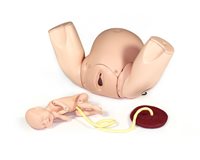
-
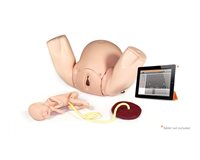
-
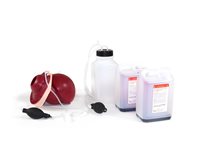
-

Cervical Dilatation & Effacement Module (CD&E) - PROMPT Flex (Light Skin Tone)
Product No. 80102
Learn more -
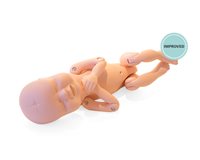
-
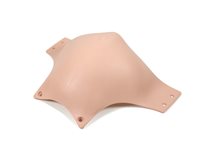
References
ECO
The Emergencies in Clinical Obstetrics (ECO) course has been created from the most updated evidence-based literature to train all levels of providers to work together during obstetric emergencies. It includes standardized lectures to provide the necessary background as well as clinical checklists for reference during the course and to use at their institutions. The simulation stations provide hands-on opportunities to practice individual skills and the critical teamwork and communication skills necessary to care for women during obstetric emergencies. The five units include breech vaginal delivery, shoulder dystocia, postpartum hemorrhage, umbilical cord prolapse, and teamwork and communication during obstetric emergencies. www.acog.org/education-and-events/simulations/eco



